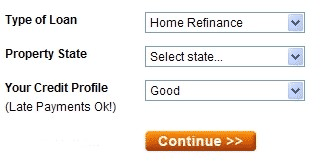USDA Rural Development Guaranteed Housing Loans

The USDA Rural Development Guaranteed Housing Loan does not require a down payment, does require an upfront fee like an FHA loan, and just recently changed the guidelines to include monthly mortgage insurance which previously it did not.
Features
Note: Read Our Top Five Mortgage Complaints!
This mortgage is one of the only ways left to get a no down payment or 100% financing mortgage to buy a home. The max loan amount is 100% of the appraised value.
The upfront fee for purchase and refinance loans is 2.0%. You can either pay that fee at closing or include it in your loan amount.
If your loan amount is $150,000 your upfront fee would be $3,000. ($150,000 X 2.0% upfront fee is $3000) If you include that in your loan amount it would be $153,000.
A monthly mortgage insurance premium is now required which is .40% annually. If your loan amount was $150,000, your monthly fee would be $50. ($150,000 X .40% divided by 12) This is added to your mortgage payment every month.
- No cash required from the borrower for down payment or reserves
- No prepayment penalty
- Fixed rate
There is also no minimum credit score for this program and it’s not just for first time homebuyers. Now just because the USDA guidelines say there is not minimum credit score, doesn’t mean you won’t run into that with different lenders. Lenders, in order to minimize their risk and the risk for their investors, can and do ask for more restrictions and documentation. You may see different lenders with different requirements for credit and other documentation.
Restrictions
But there are some catches of course. It is for owner occupied homes only in a USDA rural development eligible area.
I guess you could have figured that out by the name of this program (USDA Rural Development). The property has to be located in an eligible area to get a USDA mortgage. Just because it says rural doesn’t’ always mean you have to be out in the sticks. Input the address of the property and find out if it is within the eligible area.
Also, there are income restrictions. Just like the MyCommunityMortgage from Fannie Mae, you have to be under a certain household income amount to qualify for USDA.
Click here to search for property eligibility and income eligibility. Any mortgage company or broker can originate a USDA loan through an approved USDA lender. It’s a little like VA. As a broker or a mortgage company, I would just have to pay a fee and then I can originate a VA mortgage through a VA wholesale lender.
So, just like any other government mortgage, you still have to do your homework on the mortgage company or broker originating it. A government loan does not mean you are protected by the government. The government guarantees the mortgage but it does not guarantee the person or company originating it.
USDA mortgage rates seem to be pretty competitive with a regular Fannie Mae or FHA mortgage so that is another bonus if you are in the eligible area and within the income limits.
Reuters did a report on how many of these loans are originated in areas that are not considered rural and for people making more than $500k a year…which is not what this loan is supposed to be about. “Reuters’ analysis of lenders’ regulatory filings also found more than 180 loans to borrowers making more than $500,000, including dozens of millionaires, in apparent violation of the program’s income guidelines. It found loans in Cape Cod’s Hyannisport, home to the Kennedy family compound, and tony Healdsburg, in California’s Sonoma County wine country. There were loans for second homes, and loans to people who could have obtained conventional financing - each a breach of the program’s rules.”
However, there is something else you should know about these loans. If you default, they are not like other lenders. They have a disclosure you sign at closing stating they “will use all remedies available” to collect on their debt. I had a women put in a comment saying they took her $7000 tax refund after her home was foreclosed on and then I found this Wall Street Journal article where others have had their refunds taken and monthly garnishments to pay back the debt.
Update 4/2/13…After the original Wall Street Journal article above about the USDA’s debt collecting practices, the WSJ is reporting now that they are easing up a little when trying to collect from people in foreclosure.
So just be aware of that.
Good Luck!
Author: Terri Ewing
Previous Post: « Loan Modification Scams - 5 Steps To Protect Yourself
Next Post: » Divorce Mortgage Mistakes
More Related Posts:
Did you like this post?
If so, please consider leaving a comment below or subscribing to the RSS feed to have future articles delivered to your feed reader or delivered by email.




Leave a Reply